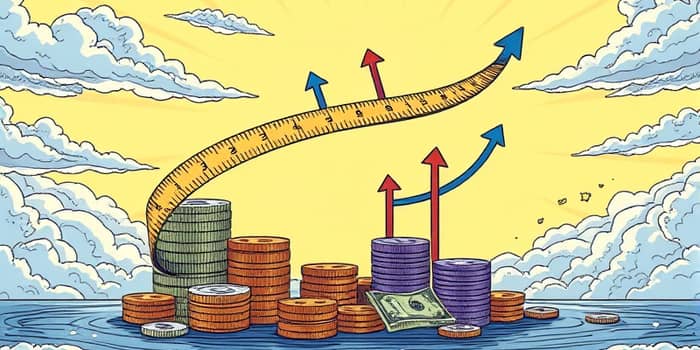
In today’s rapidly shifting economic landscape, holding on to a rigid financial plan can feel like balancing on a tightrope without a safety net. A fragile budget shatters at the first sign of unexpected expense or income change, leaving you scrambling to fill gaps. By contrast, a flexible budgeting approach offers breathing room, resilience, and insight. In this article, we will explore how to transform your budget into a living document that evolves alongside your life, equipping you with practical strategies to stay on track no matter what challenges arise.
At its core, a flexible budget is one that self-adjusts based on your actual income and spending patterns. Rather than setting fixed amounts for every category at the start of the year and refusing to deviate from them, this approach recognizes that real life is full of twists and turns. In contrast, a fragile budget clings to predetermined numbers and quickly collapses when sales dip, expenses spike, or personal circumstances shift.
By embracing a dynamic framework, you can respond in real time to new information, allocate resources more efficiently, and avoid the stress that comes from overspending or under-saving. The choice between fragility and flexibility is not just about numbers—it’s about adopting a mindset that values adaptation over rigid perfection.
Moving beyond static planning is more than a theoretical exercise; it is a path to financial confidence. A flexible budget empowers you to:
These advantages translate into tangible relief. Instead of feeling trapped by your own plan, you will have the means to pivot confidently, protect essential commitments, and continue making progress toward long-term objectives.
Creating a budget that bends rather than breaks requires deliberate steps. By following a structured process, you can design a financial roadmap that flexes with life’s demands while staying aligned with your priorities. Start by:
Each step deepens your understanding of how money moves through your hands, enabling smarter adjustments rather than panicked reactions.
Flexible budgets shine in a variety of contexts. Freelancers or commission-based workers can ride the highs of a lucrative month while cushioning against lean periods. Families facing sudden medical bills or repairs can draw from established buffers instead of resorting to credit cards. Even savers progressing toward specific targets—like a down payment or emergency fund—can shift contributions up or down based on cash flow.
By aligning these benchmarks with your individual data, you can see where to tighten or loosen the reins, ensuring your budget remains functional in both calm and stormy economic weather.
Transitioning to a flexible approach is not without its challenges. Watch out for:
By recognizing these traps upfront, you can streamline your efforts and focus on adjustments that add genuine value.
Once your flexible budget is in place, the key to long-term success lies in consistent review and honest tracking. Set aside time each week or month to reconcile bank statements, categorize transactions, and note emerging patterns. Celebrate small victories, like staying under variable cost targets or increasing savings contributions when income surges. In periods of shortfall, draw down reserves thoughtfully rather than abandoning the entire plan.
This disciplined approach transforms budgeting from a burdensome chore into a tool for empowerment, making each financial decision a conscious step toward your larger vision.
Your best budget is not the one that appears perfect on paper, but the one that bends, not breaks, under pressure. By treating your plan as a living document that evolves with your journey, you gain the resilience to weather unexpected storms and seize new opportunities as they arise. Embrace the principles of adaptability, clear tracking, and periodic recalibration to build a financial strategy that supports both your present needs and future dreams. With a flexible budget, you cultivate not just stability, but the peace of mind that comes from knowing you can handle whatever comes next.
Ready to make the shift? Start today by identifying one variable expense to adjust based on your latest income. Take that first step toward a budget that works for you—flexible, robust, and built to last.
References













